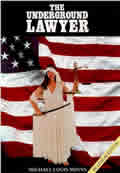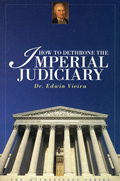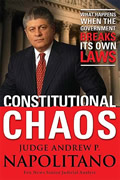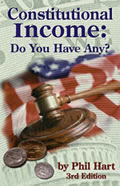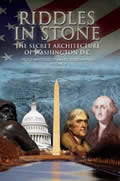A
“MISSOURI PLAN” TO CONTRACT THE DEBT BUBBLE
PART 1 of 2
By
Dr. Edwin Vieira, Jr., Ph.D., J.D.
January 12, 2009
NewsWithViews.com
As complicated and confusing as are America’s present financial woes, her fundamental problem is simply stated: This country is staggering towards economic perdition under a gargantuan load of debt that is unpayable in terms of real wealth. (It may be “payable” in the merely nominal sense that the required number of “dollars” will somehow change hands, even though those “dollars” will be substantially depreciated in purchasing power from the “dollars” in circulation when the debts were initially contracted.) And either a sizeable part of that load of debt will be lifted from her shoulders, or America will collapse economically, politically, and socially in the not too distant future.
The accelerating expansion of this burden of debt over the last two decades has exhibited the classic characteristics of a “bubble”—or, perhaps more descriptively put, a veritable “feeding frenzy” among the insatiably avaricious loan-sharks and speculators of high finance. To be sure, had not all too many common Americans become all too extensive borrowers all too quickly, this problem might not have occurred—or at least not have emerged as early and as devastatingly as it has. Yet, no matter how unprincipled, imprudent, and just plain greedy the borrowers may have been, such financial lemmings—both amateur and professional—could never have been assembled in such masses had not a sufficiency of willing lenders been available to accommodate them. And sufficient lenders willing to lend to such an exorbitant degree could not have emerged unless they had been able to lend—and the lenders could not have been able to lend with such reckless disregard for the consequences without access to a never-emptying reservoir of so-called “liquidity” to float their loans. In short, this bubble could never have been inflated to such monstrous proportions without the constant pumping of that mammoth hot-air machine of debt-currency and bank-credit, the Federal Reserve System. So this problem is not one that arose only during the Bush years, or the Clinton years, or in any other sorry Administration of recent memory, but instead is one that traces its true origin back to the “Christmas present” that Congress foisted on this country in December of 1913.
Consider how this scheme works in the ordinary case of a typical loan-contract—for example, a home mortgage.
The borrower receives a certain amount of “money”—usually in the form of the Federal Reserve System’s paper currency (Federal Reserve Notes)—or bank-credits payable in money, in return for which he promises to repay that sum, with interest, and to pledge the house and land as security. The lender—a private bank within the Federal Reserve System’s cartel—makes available the principal amount of the loan, and holds the borrower’s promise of repayment. The contractual “consideration” (in lawyers’ jargon) on the part of the borrower is his promise to repay the loan’s principal and interest to the lender; the contractual “consideration” on the part of the lender is the money or bank-credits it provides to the borrower.
The lender may obtain the principal for the loan in at least five ways. The principal may consist of:
(i)
United States coins, silver certificates, or United States Notes which
the lender happens to hold in its reserves at that time; or
(ii) old Federal Reserve Notes that the lender happens to hold in its
reserves; or
(iii) new Federal Reserve Notes that the lender requests from the Federal
Reserve System (ultimately, the Board of Governors) on the security
of the loan itself; or
(iv) old bank-credits payable in Federal Reserve Notes that the lender
already holds; or
(v) new bank-credits payable in Federal Reserve Notes that the lender
creates for the very purpose of making the loan.
Case (i) must be exceedingly rare, if it exists at all, today; and, in any event, the burden of proving its existence would be on the lender. So for all practical purposes it can be disregarded here.
In cases (ii) through (v), which make up the vast mass of these transactions, the contractual “consideration” on the part of the lender is the provision to the borrower, in one way or another, of Federal Reserve Notes or bank-credits payable in such currency—all of which currency or credit has been created directly by the lender itself pursuant to authority purportedly granted under color of the Federal Reserve Act of 1913 (as amended), or created and made available to the lender by and through the banking-cartel of which the lender is a member, also under color of that Act.
Now, Federal Reserve Notes are what America’s Founding Fathers called “bills of credit” (their name for paper currency). They are emitted under color of the Federal Reserve Act—there being no other authority whatsoever for their issuance. But Federal Reserve Notes are not simply the Federal Reserve banks’ “bills of credit.” No, indeed. They are also the General Government’s “bills of credit,” because Federal Reserve Notes:
(i)
“shall be obligations of the United States;”
(ii) “shall be receivable * * * for all taxes, customs, and other
public dues;”
(iii) “shall be redeemed in lawful money on demand at the Treasury
Department of the United States, in the city of Washington, District
of Columbia;” and
(iv) “are legal tender for all debts, public charges, taxes, and
dues”
all of which are statutory legal privileges that no private party—and the Federal Reserve regional banks as well as all of the “member banks” in the Federal Reserve System are private parties—could itself assign to its own paper currency. See 12 U.S.C. § 411 and 31 U.S.C. § 5103.
This situation, however, is a constitutional impossibility, on at least two grounds:
First
and foremost, Congress lacks the power to emit “bills of credit”
itself. Of course, the Constitution explicitly disables the States in
that regard: “No State shall * * * emit Bills of Credit[ or] make
any Thing but gold and silver Coin a Tender in Payment of Debts”.
Article I, Section 10, Clause 1. But the Constitution says nothing about
“bills of credit” with respect to Congress. That, however,
should preclude any argument that Congress enjoys any such power. For
the constitutional Congress, having no existence before ratification
of the Constitution, plainly had no powers then, either. So the only
powers it could possibly have now are the ones the Constitution delegates
to it—none of which mentions the emission of “bills of credit.”
Revealingly, the Congress under the Articles of Confederation enjoyed
a bipartite power “to borrow money, or emit bills on the credit
of the united states.” Article IX, paragraph 5. Following this
precedent, at the Federal Convention the first draft of the Constitution
included a power “To borrow Money, and emit bills on the credit
of the United States.” But, by a vote of nine States to two, the
Convention deleted the phrase “and emit bills,” so that
the power (as ratified) reads: “To borrow Money on the credit
of the United States” simpliciter. Article I, §
8, cl. 2. This proves that: (i) the power to borrow money is not the
same as the power to emit “bills of credit,” but each must
be separately delegated; and (ii) the Founding Fathers specifically
considered delegating to Congress a power to emit “bills of credit”—but
decided not to do so.
Self-evidently, inasmuch as Congress enjoys no power to emit “bills of credit” itself, it cannot delegate such a nonexistent power to the Department of the Treasury, let alone to a cartel of private banks headed by the Board of Governors of the Federal Reserve System.
Second, even if Congress did enjoy a power to emit “bills of credit” itself, it could not delegate that power to a cartel composed of private banks. Under the National Industrial Recovery Act of 1933, Congress attempted to delegate to private cartels throughout American industry (so-called “code authorities”) wide-ranging powers to make what amounted to industrial laws (so-called “codes of fair competition”) for the self-regulation of private businesses. When this statute came up for review in A.L.A. Schechter Poultry Corporation v. United States, 295 U.S. 495 (1935), the Supreme Court did not deny that Congress itself might have had the authority to impose new commercial regulations on American industry. But it recognized that the Act’s pervasive system of governmentally empowered private industrial cartels was
not simply one for voluntary effort. It does not seek merely to endow voluntary trade or industrial associations or groups with privileges or immunities. It involves the coercive exercise of law-making power. The codes of fair competition * * * are codes of law. If valid, they place all persons within their reach under the obligation of positive law, binding equally those who assent and those who do not assent. [295 U.S. at 529]
To the Roosevelt Administration’s argument that the codes should be upheld because they “‘consist[ed] of rules of competition deemed fair for each industry by representative members of that industry * * * most vitally concerned and most familiar with its problems,’” the Court retorted:
[W]ould it be seriously contended that Congress could delegate its legislative authority to trade or industrial associations or groups so as to empower them to enact the laws they deem to be wise and beneficent for the rehabilitation and expansion of their trade or industries? Could trade or industrial associations or groups be constituted legislative bodies for that purpose because such associations or groups are familiar with the problems of their enterprises? * * * The answer is obvious. Such a delegation of legislative power is unknown to our law and is utterly inconsistent with the constitutional prerogatives and duties of Congress. [295 U.S. at 537 (emphasis supplied)]
The Federal Reserve System escaped condemnation in the Schechter case because it arose, not under the National Industrial Recovery Act of 1933, but under the Federal Reserve Act of 1913, which was not at issue in that case. Yet, as a matter of political-economic fact, no significant difference in principle exists between the cartel-structures of the defunct National Industrial Recovery Act and of today’s Federal Reserve System. Under the National Industrial Recovery Act, private parties operating through “code authorities” interacted coöperatively with executive or administrative officials of the General Government to promulgate what amounted to economic laws binding their entire industries. Similarly, under the Federal Reserve System, private “member banks” operating through the twelve private “Federal Reserve regional banks” interact coöperatively with the Board of Governors to promulgate economic laws binding themselves, all “depositary institutions,” and every American who uses Federal Reserve Notes, credit, or any other banking service. The private member banks control the boards of directors of the private regional banks. In their turn, those directors select the regional banks’ representatives to the Federal Advisory Council and the Federal Open Market Committee.
The Council and the Committee then advise on, or establish, “monetary policy” with the force of law in conjunction with the Board of Governors. And the Board can issue Federal Reserve Notes (with all of their statutory special privileges described above) only as “advances” to the regional banks, and only at their initiative. See 12 U.S.C. §§ 302, 304-305, 261, 263(a), 262, 263(b), 411-412. This very structure of private groups’ exercising governmental authority, however, Schechter roundly denounced. Inasmuch as such a delegation of power to private parties was unconstitutional—yea, “unknown to our law and * * * utterly inconsistent with the constitutional prerogatives and duties of Congress”—for all private industries under the National Industrial Recovery Act in Schechter, no reason exists for it to be any less invalid for the banking industry in particular. And were this conclusion warranted were the Board of Governors a governmental agency, how much more compelling would it be were the Board, too, deemed a merely private entity (as well it might be if the matter were ever litigated)?
A few prescient Members of Congress recognized this problem at the time the Federal Reserve Act was being debated. In the House, Representative Hardwick feared that
we have established a gigantic Money Trust, with all the banks of the country concentrated in 12 great central banks, with the Government forming the connecting link between them, and the Government in actual partnership with them, lending them money, issuing “money” to them, and taking [a percentage] of their profits. * * * * *
We are giving as a substitute for the alleged private monopoly of Wall Street a gigantic monopoly that binds together all the banks in the country, issues to them unlimited paper money from the Treasury * * * on their assets, creates 12 great central banks, and puts a Government board in charge of the whole combination. In other words, fleeing from the evils of Wall Street and private monopoly, we rush headlong and pell-mell into the arms of a great public monopoly—a system that we create to-day, but may not be able to destroy to-morrow; that we control now, but that may control us before the end is reached. [50 Congressional Record at 4803]
In the Senate, Senator McCumber was even more pointed in describing what was at stake:
What would Senators think and what would the country think if it were proposed to divide the country into districts and give the railroads in each district the right, or, rather, impose on them the duty to form similar organizations, each with a board of directors completely under their control and having absolute power to carry on their business without any restraint? What would be thought of Congress in case it should be proposed that any other industries should be required by law to form similar organizations the operations of which were to be entirely within the control of those engaged in those industries? What reason is there for making a distinction between banking and other industries in favor of the former? [51 Congressional Record at 1040]
Unfortunately, a Congress stuffed with bankers’ partisans looked the other way in 1913—just as one politically compromised Congress after another has refused to correct that error ever since.
Today, though, the error calls out for correction in a manner more strident and insistent than ever before. Where America’s massive load of debt is concerned, correction is immediately necessary. Correction is, as well, relatively easy to execute, at least in the initial stage. Inasmuch as the Federal Reserve System’s “bills of credit” are unconstitutional, the contractual “consideration” on the side of the lenders in the typical loan-contract described above is equally unconstitutional. For Federal Reserve Notes, and bank-credits payable in such currency, and even the entire banking-cartel that causes such currency and credits to be created should not exist at all, let alone be the causes of the whole national economy’s derangement! The necessary consequence of the unconstitutionality of this “consideration” is that the contract as a whole is void and avoidable at the insistence of either party, and will thereupon be unenforceable in the courts. As the lawyers’ expression has it, “the courts will leave the parties where it finds them.” An obvious analogy could be drawn to a contract in which the provision of illegal drugs is the “consideration” on one side—yet a contract involving Federal Reserve Notes is patently worse, because Congress arguably could legalize otherwise illegal drugs, but cannot constitutionally license the emission of specially privileged Federal Reserve Notes and bank-credits payable therein by a banking-cartel exercising authority under a delegation of power “unknown to our law and * * * utterly inconsistent with the constitutional prerogatives and duties of Congress.”
|
Subscribe to the NewsWithViews Daily News Alerts! |
Which means that, constitutionally, the borrowers under such contracts—who of course have the incentive to avoid them if possible—can simply walk away from their obligations, in perfect legality, without having to repay one further “dollar” to the banks. (Of course, they cannot recover what they may have theretofore paid voluntarily on the purported debts.) Moreover, in principle this conclusion applies to every contract for every type of loan or extension of credit in which a bank within the Federal Reserve System, or some other entity acting in sufficient collusion with such a bank, is involved, directly or indirectly, in the creation of specially privileged Federal Reserve Notes or bank-credits payable therein. For part two click below.
Click here for part -----> 2,


